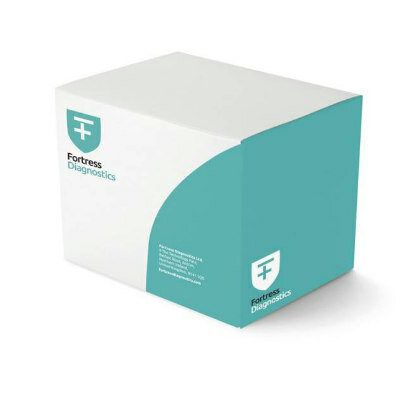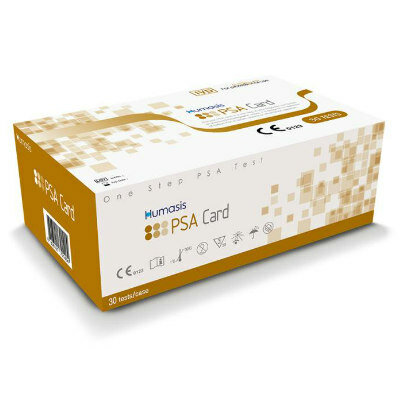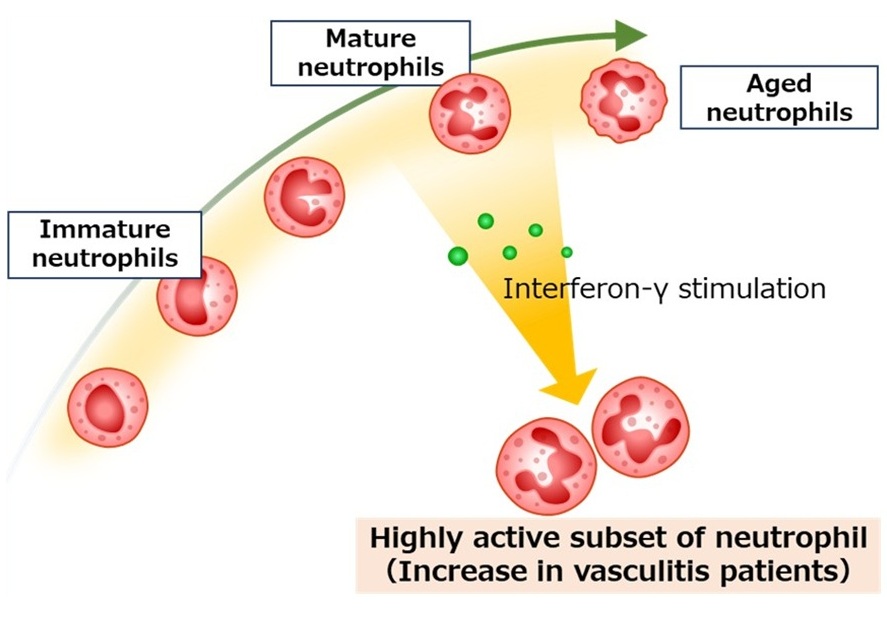Benchtop Technology Designed for Marking, Selecting Cells
|
By LabMedica International staff writers Posted on 22 Jan 2013 |

Image: The most common jellyfish protein used in lab research glows green when illuminated with UV light (Photo courtesy of NA/TSRI).
Chemists have found a simpler way to perform one of the most essential chores in molecular biology. Their new method allows scientists to add a marker to specific cells, so that these cells may be easily located and/or chosen from a larger cell population.
The technique, which is described in January 2012 in the chemistry journal Angewandte Chemie International Edition, makes use of the tight binding of two proteins that are inexpensively available but are not found in human or other mammalian cells. Therefore, it has advantages over existing cell-marking techniques.
“This new technique is cheap, easy, and sensitive,” said the Scripps Research Institute (TSRI; La Jolla, CA, USA) Prof. Richard A. Lerner, who is the senior author of the new report. “The method should be useful in a variety of applications that require separating out certain types of cells.”
The best-known cell marker currently used is green fluorescent protein (GFP), a protein derived from a jellyfish that emits a characteristic green light when illuminated by specific light wavelengths. When scientists need to add a new gene to cells, for example, to produce a therapeutic protein, they frequently construct a genetic sequence that also includes the GFP gene. Consequently, the cells that effectively produce the new protein will also generate GFP, whose fluorescence allows these cells to be identified and even sorted out from a larger population.
However, fluorescence-based cell sorting is comparatively costly and cumbersome. Alternative cell-marking techniques use marker molecules to which metals or antibodies will bind tightly, but these tend to have annoying side effects on the cells that they mark. Prof. Lerner’s team, led by first author Yingjie Peng, a postdoctoral fellow, set out to devise a better approach.
The new method exploits a special characteristic of chitinase enzymes, which evolved degrade chitin—a rugged, sugar-derived substance found, for example, in squid beaks, crab shells, and the cell walls of fungi. In addition to a main chitin-breaking domain, chitinases have another active structure, a chitin-binding domain (ChBD). “It makes a super-strong bond with chitin,” said Dr. Peng. Recently, scientists have begun to use this high-affinity binding of ChBD and chitin as a marker system, typically for selecting ChBD-tagged proteins in a lab dish. The new method uses ChBD to mark and select cells.
A new gene, in the method, can be added to cells within a larger DNA vector that also includes the genetic sequences for ChBD and GFP. The ChBD molecule will be produced in such a way that it ends up being held on the outer surface of its host cell’s plasma membrane—and the GFP molecule will sit just inside the membrane. The GFP acts as a visual beacon, while the ChBD serves as a handy gripping point for cell selection.
The scientists, after exposing a culture of test cells to this research ChBD-containing vector, were able to visualize, by way of the GFP tags, which cells were expressing them, and was able to pick them out easily, with high sensitivity, utilizing magnetic beads coated with chitin. “This is a relatively easy benchtop method,” Dr. Peng said. Significantly, these selected cells could generate progeny cells that appeared healthy.
Because the ChBD marker, in the vector, is produced in a manner that secures it to a cell’s membrane, it also can serve as a vital application for selecting just the membrane fraction of a sample of cellular material. Dr. Peng and his colleagues showed this using chitin beads to rapidly isolate a pure fraction of membrane material from ChBD-marked test cells. Cellulase enzymes, which degrade the common plant compound cellulose, also have a high-affinity cellulase-binding domain, which can be employed in the same way as the ChBD.
The scientists expect that the new cell-marking method will help to streamline another major molecular biology technique, which was developed by the Lerner laboratory in parallel with the group of Sir Gregory Winter at the Laboratory of Molecular Biology (Cambridge, UK). This technique allows scientists to produce very large and diverse libraries of antibody arms, and to sift through them, or “pan”—in the way miners pan for gold nuggets—for those that might be of use, for example in therapies. ChBD-based markers should be beneficial in boosting the effectiveness of this panning process, according to Dr. Peng.
The investigators are also assessing the potential use of ChBD-based cell marking in living animals, for example, to monitor the outcome of selected cell types throughout an animal’s lifecycle.
Related Links:
Scripps Research Institute
The technique, which is described in January 2012 in the chemistry journal Angewandte Chemie International Edition, makes use of the tight binding of two proteins that are inexpensively available but are not found in human or other mammalian cells. Therefore, it has advantages over existing cell-marking techniques.
“This new technique is cheap, easy, and sensitive,” said the Scripps Research Institute (TSRI; La Jolla, CA, USA) Prof. Richard A. Lerner, who is the senior author of the new report. “The method should be useful in a variety of applications that require separating out certain types of cells.”
The best-known cell marker currently used is green fluorescent protein (GFP), a protein derived from a jellyfish that emits a characteristic green light when illuminated by specific light wavelengths. When scientists need to add a new gene to cells, for example, to produce a therapeutic protein, they frequently construct a genetic sequence that also includes the GFP gene. Consequently, the cells that effectively produce the new protein will also generate GFP, whose fluorescence allows these cells to be identified and even sorted out from a larger population.
However, fluorescence-based cell sorting is comparatively costly and cumbersome. Alternative cell-marking techniques use marker molecules to which metals or antibodies will bind tightly, but these tend to have annoying side effects on the cells that they mark. Prof. Lerner’s team, led by first author Yingjie Peng, a postdoctoral fellow, set out to devise a better approach.
The new method exploits a special characteristic of chitinase enzymes, which evolved degrade chitin—a rugged, sugar-derived substance found, for example, in squid beaks, crab shells, and the cell walls of fungi. In addition to a main chitin-breaking domain, chitinases have another active structure, a chitin-binding domain (ChBD). “It makes a super-strong bond with chitin,” said Dr. Peng. Recently, scientists have begun to use this high-affinity binding of ChBD and chitin as a marker system, typically for selecting ChBD-tagged proteins in a lab dish. The new method uses ChBD to mark and select cells.
A new gene, in the method, can be added to cells within a larger DNA vector that also includes the genetic sequences for ChBD and GFP. The ChBD molecule will be produced in such a way that it ends up being held on the outer surface of its host cell’s plasma membrane—and the GFP molecule will sit just inside the membrane. The GFP acts as a visual beacon, while the ChBD serves as a handy gripping point for cell selection.
The scientists, after exposing a culture of test cells to this research ChBD-containing vector, were able to visualize, by way of the GFP tags, which cells were expressing them, and was able to pick them out easily, with high sensitivity, utilizing magnetic beads coated with chitin. “This is a relatively easy benchtop method,” Dr. Peng said. Significantly, these selected cells could generate progeny cells that appeared healthy.
Because the ChBD marker, in the vector, is produced in a manner that secures it to a cell’s membrane, it also can serve as a vital application for selecting just the membrane fraction of a sample of cellular material. Dr. Peng and his colleagues showed this using chitin beads to rapidly isolate a pure fraction of membrane material from ChBD-marked test cells. Cellulase enzymes, which degrade the common plant compound cellulose, also have a high-affinity cellulase-binding domain, which can be employed in the same way as the ChBD.
The scientists expect that the new cell-marking method will help to streamline another major molecular biology technique, which was developed by the Lerner laboratory in parallel with the group of Sir Gregory Winter at the Laboratory of Molecular Biology (Cambridge, UK). This technique allows scientists to produce very large and diverse libraries of antibody arms, and to sift through them, or “pan”—in the way miners pan for gold nuggets—for those that might be of use, for example in therapies. ChBD-based markers should be beneficial in boosting the effectiveness of this panning process, according to Dr. Peng.
The investigators are also assessing the potential use of ChBD-based cell marking in living animals, for example, to monitor the outcome of selected cell types throughout an animal’s lifecycle.
Related Links:
Scripps Research Institute
Latest BioResearch News
- Genome Analysis Predicts Likelihood of Neurodisability in Oxygen-Deprived Newborns
- Gene Panel Predicts Disease Progession for Patients with B-cell Lymphoma
- New Method Simplifies Preparation of Tumor Genomic DNA Libraries
- New Tool Developed for Diagnosis of Chronic HBV Infection
- Panel of Genetic Loci Accurately Predicts Risk of Developing Gout
- Disrupted TGFB Signaling Linked to Increased Cancer-Related Bacteria
- Gene Fusion Protein Proposed as Prostate Cancer Biomarker
- NIV Test to Diagnose and Monitor Vascular Complications in Diabetes
- Semen Exosome MicroRNA Proves Biomarker for Prostate Cancer
- Genetic Loci Link Plasma Lipid Levels to CVD Risk
- Newly Identified Gene Network Aids in Early Diagnosis of Autism Spectrum Disorder
- Link Confirmed between Living in Poverty and Developing Diseases
- Genomic Study Identifies Kidney Disease Loci in Type I Diabetes Patients
- Liquid Biopsy More Effective for Analyzing Tumor Drug Resistance Mutations
- New Liquid Biopsy Assay Reveals Host-Pathogen Interactions
- Method Developed for Enriching Trophoblast Population in Samples
Channels
Clinical Chemistry
view channel
‘Brilliantly Luminous’ Nanoscale Chemical Tool to Improve Disease Detection
Thousands of commercially available glowing molecules known as fluorophores are commonly used in medical imaging, disease detection, biomarker tagging, and chemical analysis. They are also integral in... Read more
Low-Cost Portable Screening Test to Transform Kidney Disease Detection
Millions of individuals suffer from kidney disease, which often remains undiagnosed until it has reached a critical stage. This silent epidemic not only diminishes the quality of life for those affected... Read more
New Method Uses Pulsed Infrared Light to Find Cancer's 'Fingerprints' In Blood Plasma
Cancer diagnoses have traditionally relied on invasive or time-consuming procedures like tissue biopsies. Now, new research published in ACS Central Science introduces a method that utilizes pulsed infrared... Read moreMolecular Diagnostics
view channel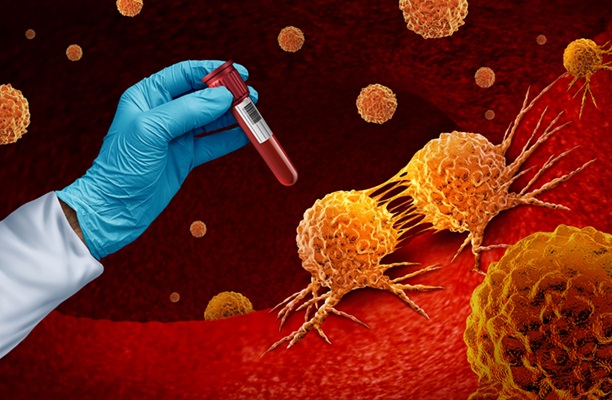
Revolutionary Blood Test Detects 30 Different Types of Cancers with 98% Accuracy
With cancer expected to become the leading cause of global mortality by 2030, early detection remains the most effective strategy to reduce death rates. Current screening methods only cover five types... Read more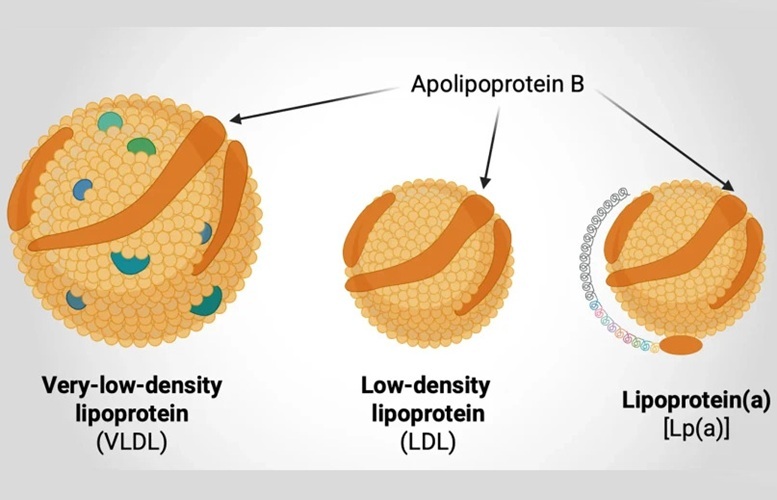
Simple Blood Test Better Predicts Heart Disease Risk
Cardiovascular diseases (CVDs) are the primary cause of death worldwide. A large proportion of these cases could be prevented by addressing lifestyle and environmental factors such as smoking, poor diet,... Read moreHematology
view channel
New Scoring System Predicts Risk of Developing Cancer from Common Blood Disorder
Clonal cytopenia of undetermined significance (CCUS) is a blood disorder commonly found in older adults, characterized by mutations in blood cells and a low blood count, but without any obvious cause or... Read more
Non-Invasive Prenatal Test for Fetal RhD Status Demonstrates 100% Accuracy
In the United States, approximately 15% of pregnant individuals are RhD-negative. However, in about 40% of these cases, the fetus is also RhD-negative, making the administration of RhoGAM unnecessary.... Read moreImmunology
view channel
Stem Cell Test Predicts Treatment Outcome for Patients with Platinum-Resistant Ovarian Cancer
Epithelial ovarian cancer frequently responds to chemotherapy initially, but eventually, the tumor develops resistance to the therapy, leading to regrowth. This resistance is partially due to the activation... Read more
Machine Learning-Enabled Blood Test Predicts Immunotherapy Response in Lymphoma Patients
Chimeric antigen receptor (CAR) T-cell therapy has emerged as one of the most promising recent developments in the treatment of blood cancers. However, over half of non-Hodgkin lymphoma (NHL) patients... Read moreMicrobiology
view channel
Handheld Device Delivers Low-Cost TB Results in Less Than One Hour
Tuberculosis (TB) remains the deadliest infectious disease globally, affecting an estimated 10 million people annually. In 2021, about 4.2 million TB cases went undiagnosed or unreported, mainly due to... Read more
New AI-Based Method Improves Diagnosis of Drug-Resistant Infections
Drug-resistant infections, particularly those caused by deadly bacteria like tuberculosis and staphylococcus, are rapidly emerging as a global health emergency. These infections are more difficult to treat,... Read more
Breakthrough Diagnostic Technology Identifies Bacterial Infections with Almost 100% Accuracy within Three Hours
Rapid and precise identification of pathogenic microbes in patient samples is essential for the effective treatment of acute infectious diseases, such as sepsis. The fluorescence in situ hybridization... Read morePathology
view channel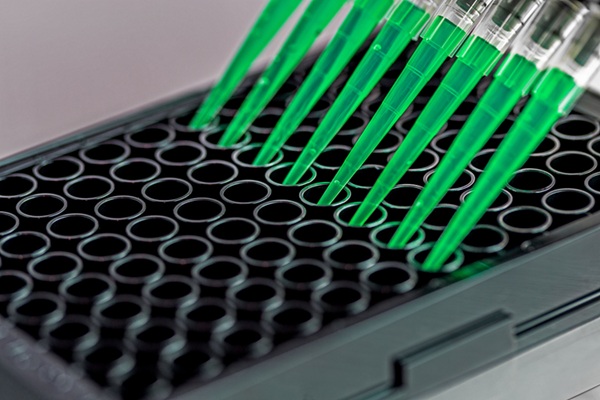
Sensitive and Specific DUB Enzyme Assay Kits Require Minimal Setup Without Substrate Preparation
Ubiquitination and deubiquitination are two important physiological processes in the ubiquitin-proteasome system, responsible for protein degradation in cells. Deubiquitinating (DUB) enzymes contain around... Read more
World’s First AI Model for Thyroid Cancer Diagnosis Achieves Over 90% Accuracy
Thyroid cancer is one of the most common cancers worldwide, and its precise management typically relies on two primary systems: (1) the 8th edition of the American Joint Committee on Cancer (AJCC) or ... Read more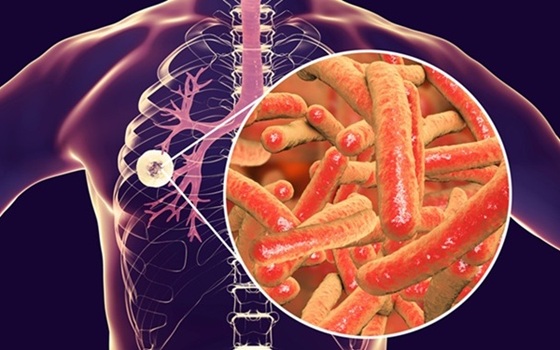
Breakthrough Diagnostic Approach to Significantly Improve TB Detection
Tuberculosis (TB) remains the deadliest infectious disease globally, with 10.8 million new cases and 1.25 million deaths reported in 2023. Early detection through effective screening is crucial in identifying... Read more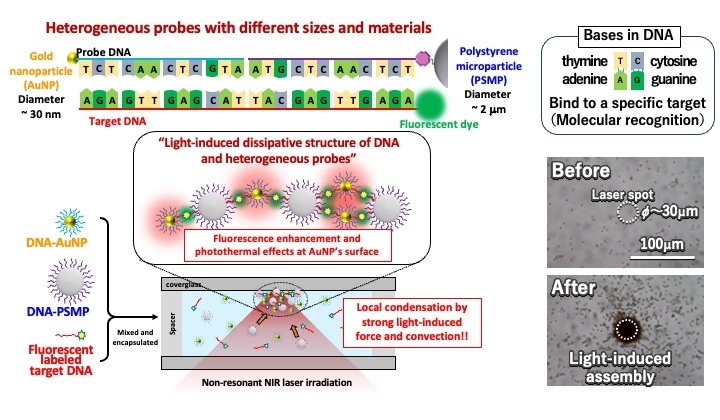
Rapid, Ultra-Sensitive, PCR-Free Detection Method Makes Genetic Analysis More Accessible
Genetic testing has been an important method for detecting infectious diseases, diagnosing early-stage cancer, ensuring food safety, and analyzing environmental DNA. For a long time, polymerase chain reaction... Read moreTechnology
view channel
Disposable Microchip Technology Could Selectively Detect HIV in Whole Blood Samples
As of the end of 2023, approximately 40 million people globally were living with HIV, and around 630,000 individuals died from AIDS-related illnesses that same year. Despite a substantial decline in deaths... Read more
Pain-On-A-Chip Microfluidic Device Determines Types of Chronic Pain from Blood Samples
Chronic pain is a widespread condition that remains difficult to manage, and existing clinical methods for its treatment rely largely on self-reporting, which can be subjective and especially problematic... Read more
Innovative, Label-Free Ratiometric Fluorosensor Enables More Sensitive Viral RNA Detection
Viruses present a major global health risk, as demonstrated by recent pandemics, making early detection and identification essential for preventing new outbreaks. While traditional detection methods are... Read moreIndustry
view channel
Cepheid and Oxford Nanopore Technologies Partner on Advancing Automated Sequencing-Based Solutions
Cepheid (Sunnyvale, CA, USA), a leading molecular diagnostics company, and Oxford Nanopore Technologies (Oxford, UK), the company behind a new generation of sequencing-based molecular analysis technologies,... Read more
Grifols and Tecan’s IBL Collaborate on Advanced Biomarker Panels
Grifols (Barcelona, Spain), one of the world’s leading producers of plasma-derived medicines and innovative diagnostic solutions, is expanding its offer in clinical diagnostics through a strategic partnership... Read more







